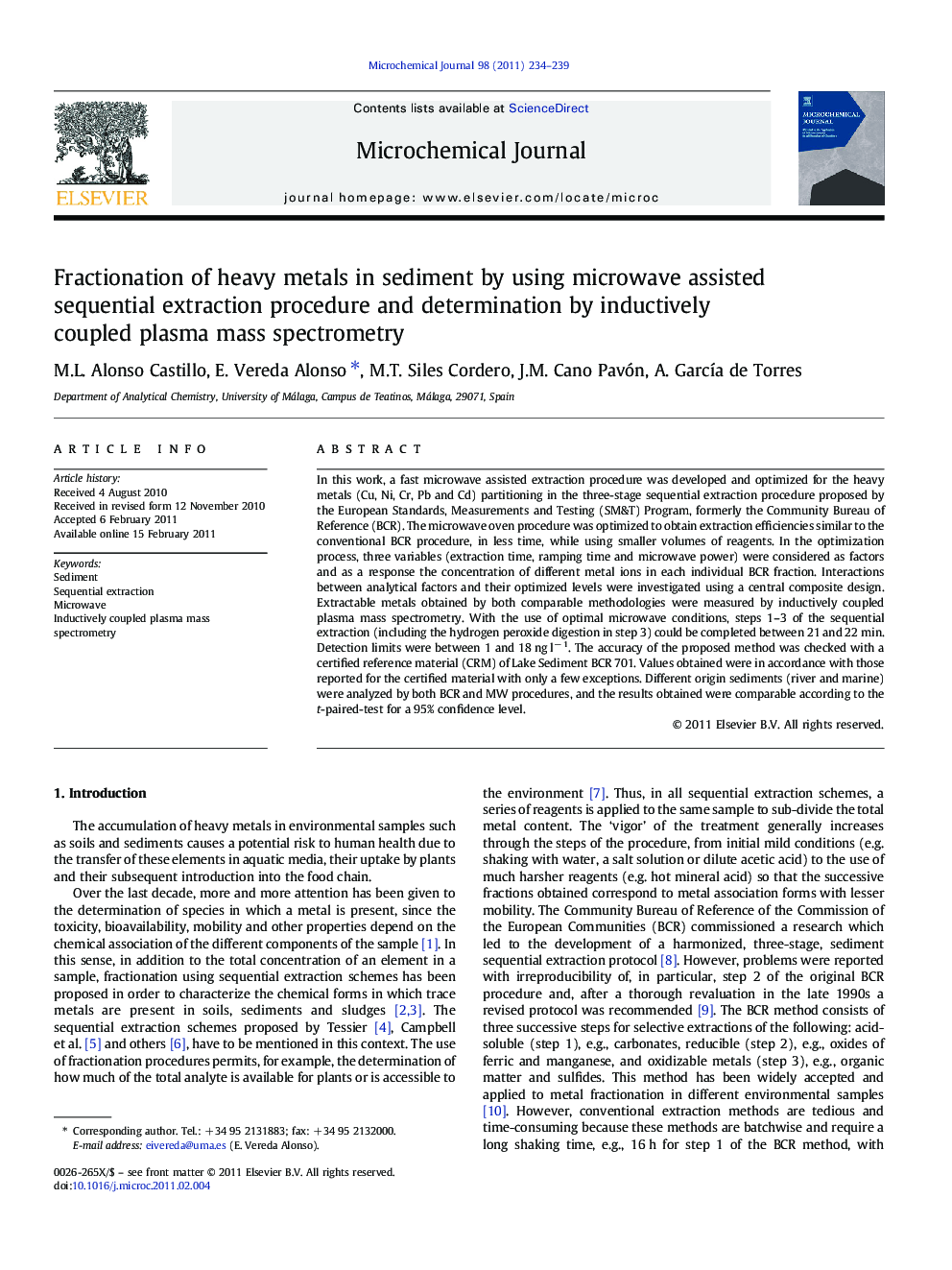| Article ID | Journal | Published Year | Pages | File Type |
|---|---|---|---|---|
| 1228031 | Microchemical Journal | 2011 | 6 Pages |
In this work, a fast microwave assisted extraction procedure was developed and optimized for the heavy metals (Cu, Ni, Cr, Pb and Cd) partitioning in the three-stage sequential extraction procedure proposed by the European Standards, Measurements and Testing (SM&T) Program, formerly the Community Bureau of Reference (BCR). The microwave oven procedure was optimized to obtain extraction efficiencies similar to the conventional BCR procedure, in less time, while using smaller volumes of reagents. In the optimization process, three variables (extraction time, ramping time and microwave power) were considered as factors and as a response the concentration of different metal ions in each individual BCR fraction. Interactions between analytical factors and their optimized levels were investigated using a central composite design. Extractable metals obtained by both comparable methodologies were measured by inductively coupled plasma mass spectrometry. With the use of optimal microwave conditions, steps 1–3 of the sequential extraction (including the hydrogen peroxide digestion in step 3) could be completed between 21 and 22 min. Detection limits were between 1 and 18 ng l− 1. The accuracy of the proposed method was checked with a certified reference material (CRM) of Lake Sediment BCR 701. Values obtained were in accordance with those reported for the certified material with only a few exceptions. Different origin sediments (river and marine) were analyzed by both BCR and MW procedures, and the results obtained were comparable according to the t-paired-test for a 95% confidence level.
